The GAPS Diet (with kids) Explained

This post may contain affiliate links.
The GAPS Diet is not exactly a diet but a nutritional program and it has also changed our lives! If you have a child with food allergies, with Sensory Processing Disorder or any sensory issues, this article is for you.
If you have members of your family that suffer from anxiety; or ADHD, and you are worried about your kids — then you’ve come to the right place. And guess what? So many issues including autoimmunity, gut problems and fatigue also fall under the GAPS umbrella, as Gut and Physiology Syndrome!
I am going to break down the GAPS diet and answer the most frequently asked questions about GAPS.
This post has been a long time coming and my honest hope is that it will make you consider reading the complete Gut and Psychology Syndrome book by Dr. Natasha Campbell McBride, or her new Gut and Physiology Syndrome book.
Implementing some lifestyle changes will improve your, and your child’s, wellbeing.
What Brought Us to GAPS
I’m going to keep this section purposefully vague, to protect my childrens’ privacy to some extent. However, I believe it is important to share our own story because it is compelling to see the wonderful changes this diet has brought to our lives.
So what brought us to GAPS? Both of our older kids had some food allergies and that was definitely a prime factor. However, in one in particular, the food reactions also resulted in sensory seeking behavior, a small amount eye contact issues, and something that as a mother felt “off”.
The first “solution” I found was the gluten free, caesin free diet.
Gluten Free Casein Free Diet
The Gluten Free Casein Free diet, essentially means excluding all dairy products and all wheat products. We happily lived this way for two years. There are plenty of gluten free products on the market, as well as dairy alternatives mostly made of almonds or coconuts.
On the one hand, it’s not too hard of a diet to follow these days. Our biggest struggle was just at birthday parties and the like. However, I was often able to make some store bought gluten free frozen pizza or cupcakes and solve that problem.
However, it did mean we were eating a lot of rice and corn based products. Also the processed alternatives meant a lot of sketchy starches (tapioca, arrowroot) and gums (locust bean gum, guar gum, carrageenan) etc.
The positive side of this diet is that it seemed to solve all of our sensory issues. It also brought me a lot of information about the autism community where this diet is heavily promoted.
It made me aware of sensitivities to glutamates (MSG and its derivatives) and salicylates (present in high amount in fruits such as raisins and stone fruit)- both of which we seemed to be dealing with.
However, something told me this was not the long term solution we needed. Something was still off. And all those birthday parties with the pizza were motivating me to find something else.
Why Going Dairy Free and Gluten Free Doesn’t Work
And now we get to the root problem, which is why restrictive allergen- avoiding diets don’t work well in the long term. If you want the full, detailed explanation- read Dr. Natasha’s explanation in the book, but for now, here is the short version:
The reason your body (or your child’s body) is reacting to certain “allergens” is because the gut is “leaky”. In the medical world you will hear this referred to as intestinal permeability.
What is Leaky Gut?
The term “leaky gut” has been gradually entering the main stream. Briefly speaking it means that the cells that line your gut (enterocytes) have been weakened and are letting allergens (food particles, toxins, bacteria) into your blood stream.
These things, that should be contained in the gut, are suddenly finding their way into all sorts of places they don’t belong in your body. One of those is the brain where they can cross the blood-brain barrier. (This is definitely what I was seeing with sensory reactions to food: gluteomorphins and caseomorphins).
From there it is a slippery slope into a myriad of autoimmune reactions. A mildly damaged intestine might show up as IBS, gas, irregular bowel movements, eczema, perhaps some mild anxiety. As the damage progresses the diagnoses may become more severe. Here are more systems affected by digestion.
The Psychology in Gut and Psychology Syndrome
The premise of GAPS is that certain behaviors are brought on by toxicity in the gut. Because the gut is leaky, toxins, and food particles get into the blood stream and eventually to the brain.
This is why a lot of GAPS people present with picky eating and various abdominal symptoms in addition to whatever we think of as the “main issue”.
Because we all have different exposure to toxins in our environment and different levels of “leakiness” in the gut, GAPS ends up encompassing a huge range of mental and physical issues.
*Again, I am not a doctor, but Dr. Natasha explains this very clearly in the book with good drawings! Also, this is most definitely becoming accepted in the functional medicine world.
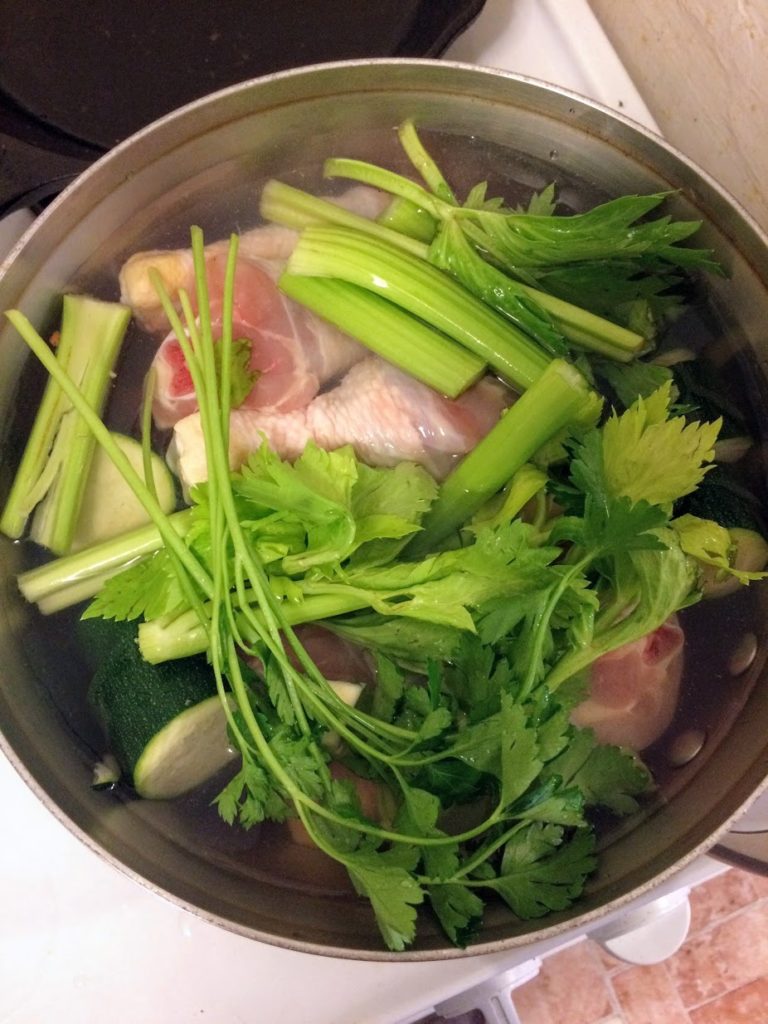
Getting ready to make meat stock!
An Overview of the GAPS Diet Protocol
The idea of the GAPS Diet is to heal the gut. This is done by incorporating:
- Nourishing gut-healing foods, specifically meat stock (i.e. chicken soup).
- Crowding out the pathogenic bacteria, that has caused the gut to be leaky, by removing their food source through following the Specific Carbohydrate Diet (no grains, no starches).
- Repopulating the gut with beneficial bacteria through introduction of probiotics.
So then the GAPS diet is actually much more than just a diet. It is a program that has you detox the toxins in your environment. Most importantly, it has you heal your gut and repopulate it with beneficial bacteria, so that you will not react to every exposure because your body will be able to deal with it.
>>Read a quick summary of how to get started with the GAPS diet.
If you’ve made it this far, consider downloading the Pantry Reset Ebook to prepare you for going on GAPS in the future.
Environmental Toxins
You’re losing me, right? So a quick word on environmental toxins. Whether we are acutely aware of them, or choose to ignore them, toxins are a fact of life in the modern world. Here are a few simple examples:
- Air pollution is an obvious one, and one that is very hard to avoid.
- Chlorinated water in pools- our skin absorbs all that chlorine, and our body then needs to get rid of it.
- Flame retardants that come on furniture, or childrens’ pajamas!
- Pesticide residue on food. Not to mention, hormones and antibiotics, if you eat conventional factory farmed meat.
- And unfortunately, the list goes on…
What to eat on the GAPS diet
The main components are eating a lot of meat stock which has gut healing properties, while eating a diet that is easy to digest, and avoiding those things that are harder for our bodies to digest because those feed the pathogenic bacteria which we are trying to root out.
So very roughly- you can eat meat, fish, vegetables, fruit, with emphasis on high quality fats. You are avoiding- anything artificial/processed, most starches, grains and legumes (with a couple exceptions). Dairy is split- fermented is fine, fresh is avoided. The other thing you want to have a lot of is fermented foods, to populate you gut with probiotics.
Stages
In general, the Full GAPS diet is a less restrictive form that includes all of the above. Meanwhile, for more extreme symptoms and faster healing, you can follow the GAPS Introduction Diet.
The Introduction diet goes through six stages, gradually incorporating food that is harder to digest and supporting detoxification through juicing. (More on this to come soon!)
After approximately two years, one can “come off” the GAPS diet, and slowly begin following a more varied traditional diet. This would incorporate Westin A Price principles.
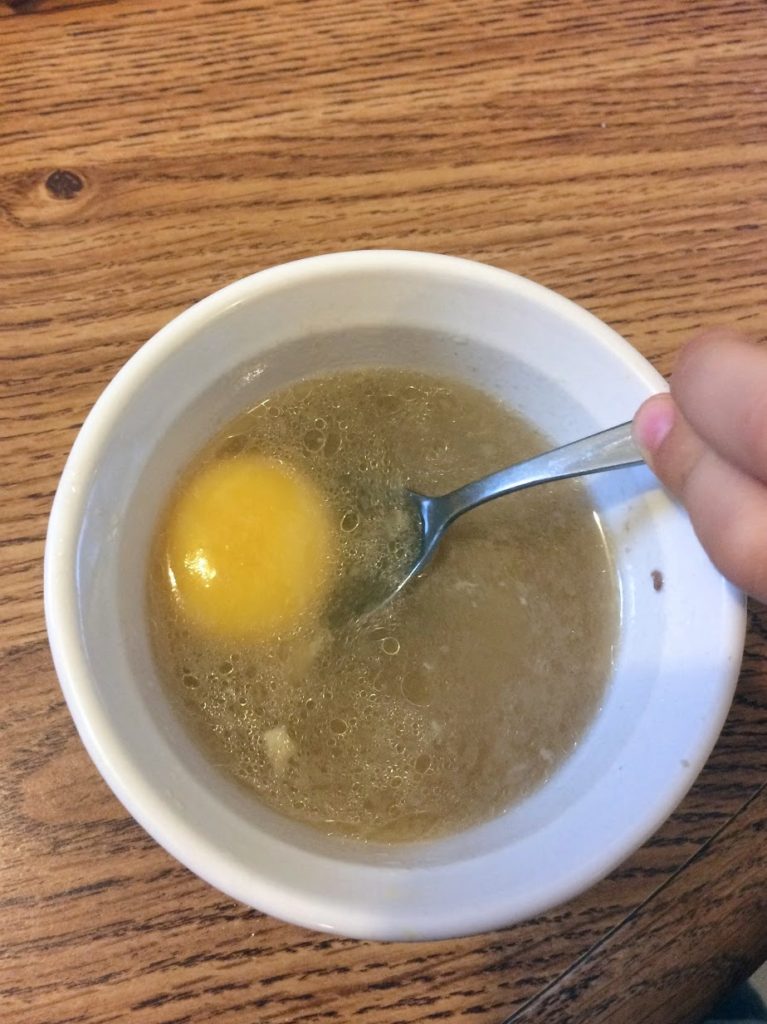
How We Implemented the GAPS Diet
So our experience: When I read all that GAPS involved I was really overwhelmed but also I knew instinctively that this was what I had been looking for. (I could not accept that my kid would have to live with multiple food allergies for the rest of his life and was worried about how behaviors would develop as he got older).
I took about two months to slowly learn to make the main components of the diet, while we ate the things that were off-plan that we still had in the house. Then I dove in to the diet. (In retrospect I should have taken even more time to get comfortable with everything).
With one child, we moved through the Introduction Diet for a month. This is the more strict version when you are going through stages but provides much quicker healing. The rest of the family ate Full GAPS, which is much more sustainable long term.
After a month I was super burned out from all the cooking (that’s why I suggest taking longer to prepare and stock up food in the freezer).
So then we stayed at Stage 6 for another 4 or 5 months, then started to get a little more lax when with the start of a new school year, and got everyone on Full GAPS.
Thankfully I could send his lunch so that was good, but we definitely couldn’t keep up with all the stock/broth and that definitely slowed us down in terms of healing.
In the years since, we have fluctuated in our eating habits. We stayed on Full GAPS for over a year initially, also working through the dairy introduction protocol.
At times travel, school and life got in the way, so when GAPS wasn’t possible, we stuck with the Specific Carbohydrate Diet, or at the very least Paleo principles.
Update: We did a second round of GAPS intro in 2020, and Full GAPS for another year, including Baby GAPS with our youngest child (post to come, eventually).
>>You can read more about my experience on GAPS through different stages here.
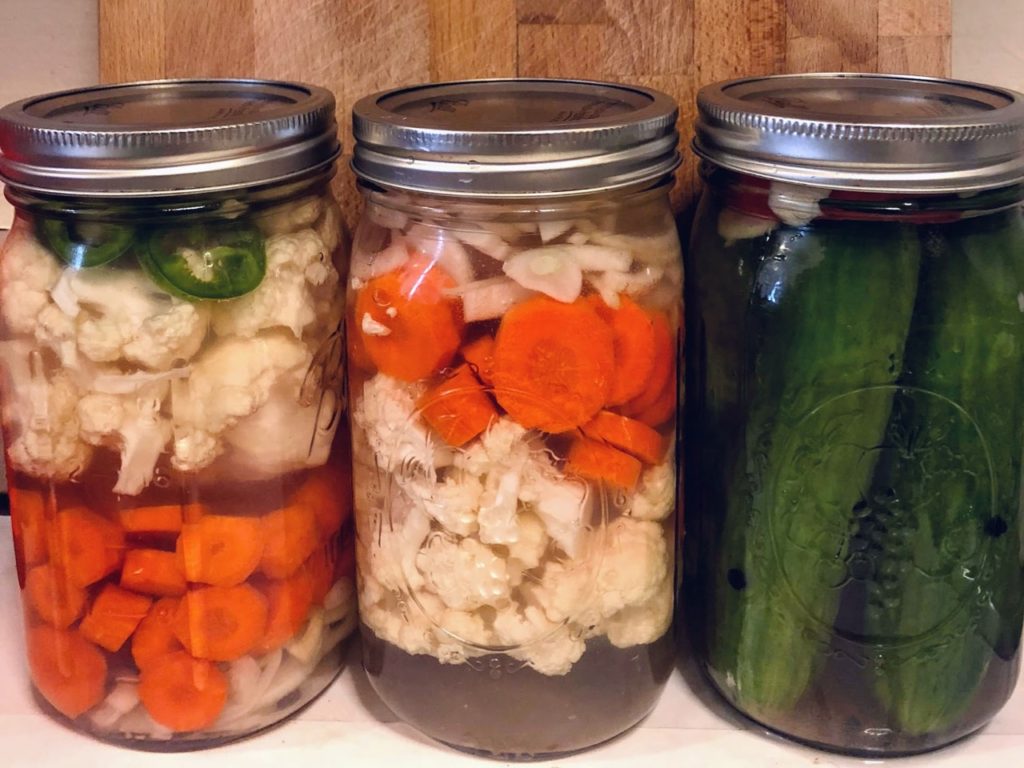
Fermentation
One practice we haven’t stopped this entire time, is eating fermented foods daily! I credit a lot of positive improvements with keeping our gut microbiome happy with a variety of ferments!
Making ferments is SO easy! You take a vegetable, add salt and water and leave it on the counter in a jar. That’s it!
You do not need any specialty equipment, at all! Although of course, you can buy gear to make it a touch easier, that’s for another day.
How the GAPS Diet Changed Our Lives
What I can say is that we completely healed the eye contact issues and the vast majority (all?) of the behavioral concerns! We also healed quite a few food allergies!
We still have a couple that are not 100% but reactions are much, much less. We were pretty good following Full GAPS for most of the past two years (with some “cheats” on vacation/holidays), and even started adding in occasional non-GAPS foods most of which have been fine. (Update: we took the 2020 “quarantine” to re-start on GAPS Intro to try to clear up the remaining issues).
What more can I add? I will say, that when I personally follow GAPS I have zero anxiety. The more closely you follow the protocol in the book the quicker you will see healing.
But also, it’s a marathon, not a sprint. I have seen with my own eyes that it works, and I sincerely hope that more parents find out about it so they can heal their children.
By the time 6 months of following the protocol had rolled around I had personally had a revolutionary transformation. My energy levels taking care of three kids were higher than they were for years. I don’t get tired after meals. Seasonal allergies essentially disappeared. All abdominal symptoms resolved. And my mind is at peace.
I just feel so much better and at this point I can have a “cheat” meal from time to time with no ill effects.
That said, I just don’t have any desire to go back to regular consumption of more “mainstream” foods that contain various additives, inflammatory oils, preservatives etc because I have realized what a profound effect the foods we eat have on our body. I expect to feel great every day!
Why I Want You to Know About the GAPS Diet
In my ten years of motherhood so far, I have seen a ton of kids with sensory issues and/or allergies. Truly every school, club, sport that my kids have been involved in, there is always at least one kid with one of these issues.
When it comes down to it, I feel a moral responsibility to share this information as widely as possible. Even if it is just planting the seeds of the idea.
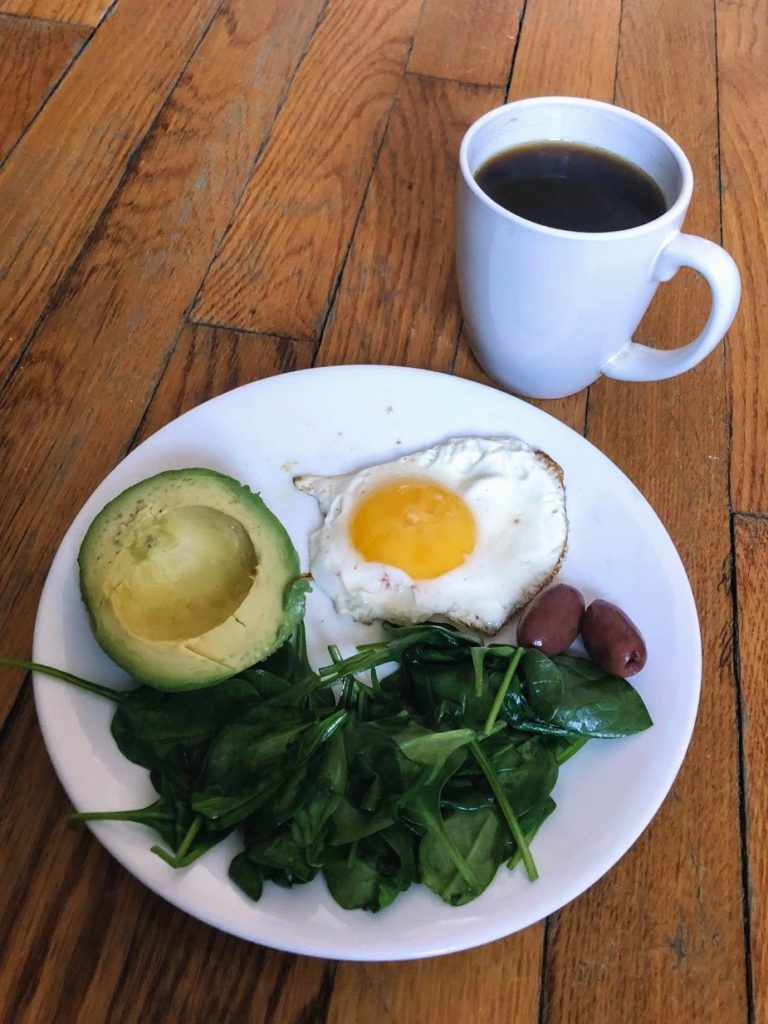
Frequently Asked Questions:
What do you eat on a typical day?
Water first (often with a squeeze of lemon)
Breakfast 1-2 sunny side up eggs (depending on hunger level), big handful (1 cup?) of greens- lightly sautéed (often with a squeeze of lemon, or tomato or salsa- vitamin c to help absorption, and half an avocado, a small amount of something probiotic (sauerkraut, pickles, yogurt), and black coffee. Several days a week I also have some type of meat in the morning.
Snack- apple and handful of almonds or butter.
Lunch- Leftovers from dinner, lentils or navy beans cooked in broth, or salad with tuna or salmon, something like olives for extra fat and again probiotic.
Dinner- Homemade soup (meat stock cooked 2 hours with veg), some type of meat protein or fish, a cooked vegetable (peas, green beans, squash, zucchini, etc), salad; when I feel like I need to detox I will make a vegetarian protein like lentils.
What do you send your children for lunch?
The ideal food to send to school, would be a thermos with the same foods you eat the rest of the day. Unfortunately that’s not always practical. In our case, the kids were in a school that requested vegetarian lunches.
Lucky for you, I have a whole post of examples of lunches I’ve sent. Generally speaking it is a main course that includes protein and fat, a side vegetable, a side fruit and something probiotic and sometimes a “treat”.
Isn’t it hard to follow all the time, with birthdays, holidays, etc?
Yes! It is, and I won’t sugarcoat it. When we did the first couple months of the Introduction Diet, I declined most invitations for this specific reason. We had bare bones holiday celebrations (thankfully with friends that were very understanding), and really I just packed us foods everywhere we went.
Yes it was a lot of work, and it was tiring to be in the kitchen for so much time each day. On the other hand, what is a few months in the scheme of a lifetime? And if we’re already committed to doing something, then let’s do it right!
I can’t tell you how happy I was to gradually ease off into the Full GAPS diet, and eventually back into regular Paleo / Primal Diet. Even more so it has been a relief to occasionally incorporate off plan foods (“cheats”), knowing that we are still in good shape.
How long do you have to stay on the GAPS Diet?
One of the most encouraging aspects of GAPS is that it is NOT a forever diet. For many people it will take roughly two years of eating this way to have significant healing and be able to move on from the diet.
That timeline is because of the time it takes for our cells to change over. Isn’t our body amazing? If you give it the right tools, it heals itself. That said, people treating more severe conditions, may have to be on the diet longer.
Just like we are all influenced differently by changes in the microbiome, and exposure to environmental factors, our healing journey may have some back and forth as the layers of the onion peel back.
Ok, so how do I start?
If reading this has convinced you to try to ease into the GAPS diet, or at least to learn more, here are my recommended resources:
Understand GAPS and How it Works
- Gut and Psychology Syndrome Book– if nothing else, you can completely DIY your journey by following the recommendations in the book!
- Gut and Physiology Syndrome Book– if your conditions fall under the physiology umbrella, get this version instead. The diet is the same.
- GAPS, Stage by Stage– I wish I had had this book when we did intro the first time around. It is not particularly well written (sorry!) but if you can get over that, the content is gold!
Hire a GAPS Practitioner
Hire a GAPS practitioner– If you are overwhelmed, there are certified practitioners that can help you in this journey with 1:1 coaching and support. I wish I had done this and think our healing would have been more complete the first time around. This is the reason we are working on creating the GAPS Healing website and soon you will be able to get direct advice from us. Michael is a certified GAPS practitioner.
Gather your materials
- A pot- stainless steel or glass is best.
- Good quality meats and bones to make broth (meat stock). Load up the freezer. Check out this app to find a local farmer.
- Eggs- find a local farmer or consult this database to find a good source.
- Tea- get fresh or buy these bags: Chamomile, Ginger, Mint.
- Jars for your ferments- any, but I find mason jars are most convenient. (Cheaper to buy in store rather than online).
- An immersion blender– any blender or food processor will do, but this is by far my most used kitchen tool for GAPS and I consider it essential for all the soup making. (I linked the one I own, but this cheaper one also looks good).
- Epsom Salt for detox baths.
- Patience and a positive attitude! Essential for healing!
Since this is probably the longest post I have ever written, I’m going to wrap it up right here. Feel free to drop a comment or email me with questions! Love and light to you all!
Do you have any questions about the GAPS diet with kids?
Get Started Today
Your Health Starts at Home!
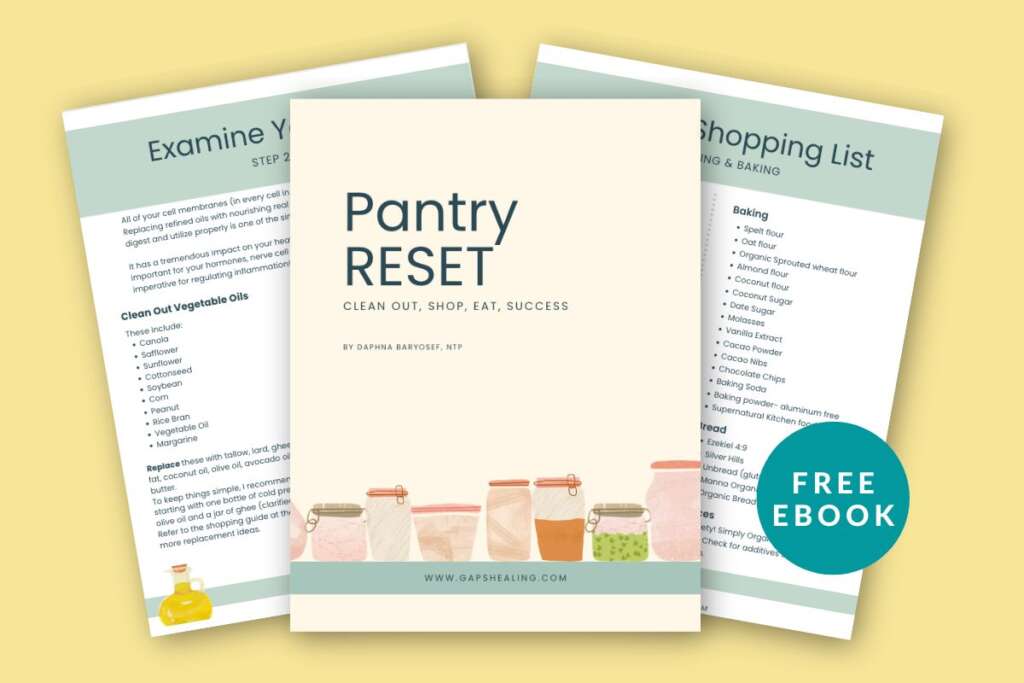
The Ultimate Shopping List and Step by Step Guide to Filling your Home with the Best food for your Family!
Make your food your medicine.
References:
Mu, Q., Kirby, J., Reilly, C. M., & Luo, X. M. (2017). Leaky Gut As a Danger Signal for Autoimmune Diseases. Frontiers in immunology, 8, 598. https://doi.org/10.3389/fimmu.2017.00598
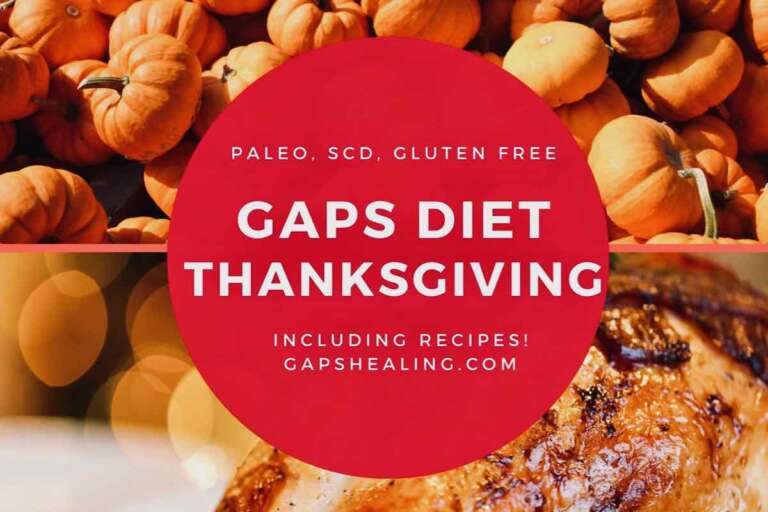





Thank you. I have a special needs child and am starting this journey, trying to explain to my husband what I am about to do. So this is very helpful. So excited I found something to heal my child that I believe in.